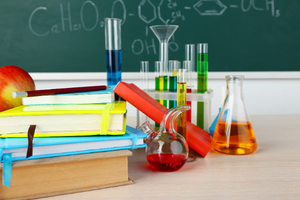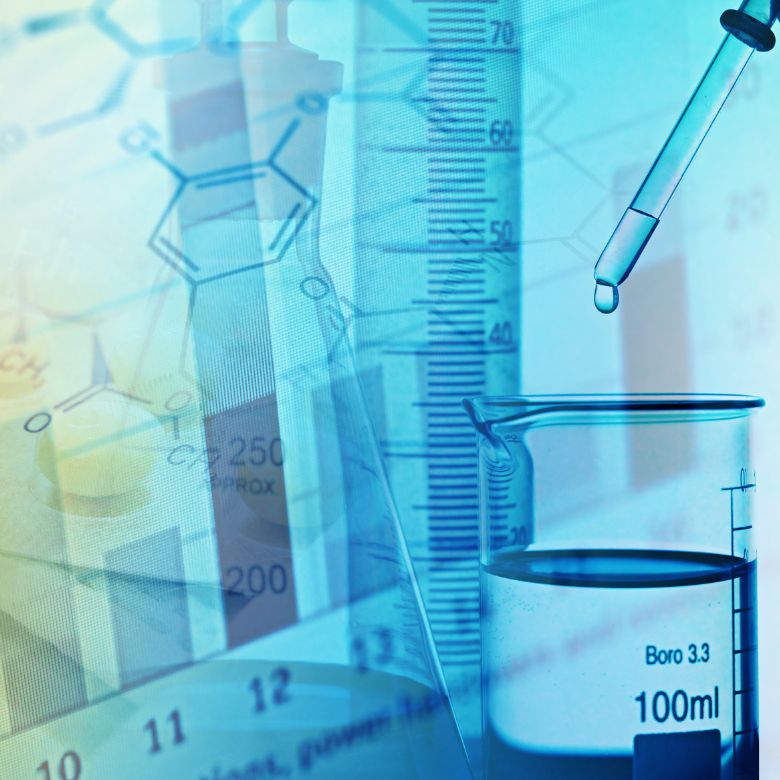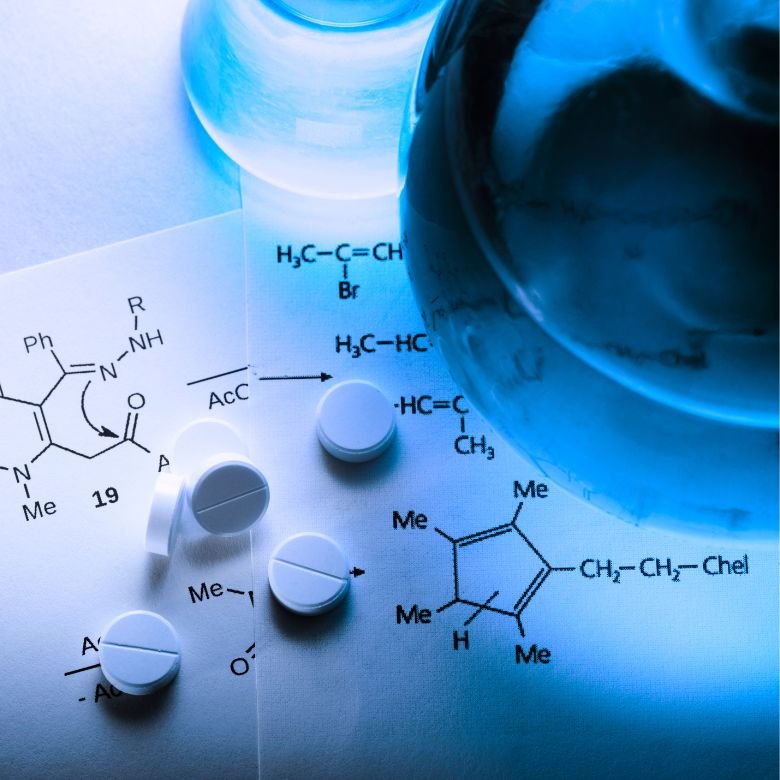Chemistry is an experimental science that requires understanding the laws and relationships between substances in the world. Some of them are commonly accepted assumptions aimed at ordering certain characteristics. Others, on the other hand, allow for a qualitative or quantitative assessment of the results of the reactions carried out.

The law of periodicity
The periodic table of chemical elements was created on the basis of the law of periodicity formulated by Dmitry Mendeleev at the end of the 19th century. Currently, the assumption determines that “the properties of chemical elements ordered in accordance with increasing atomic number repeat periodically”. The arrangement of elements in the periodic table allows us to quickly interpret relationships such as:
- the valence shell number, as it is equal to the period number,
- the number of electron shells occupied by electrons, as it is equal to the period number,
- the number of valence electrons, as it is equal to the group number 1-2 or is reduced by 10 for groups 13-18.
In addition, there are a number of properties that can also suggest the location of the element for the s and p blocks:
- as the atomic number in a group increases, atomic radius, metallic character, activity of metals increases,
- as the atomic number in a group increases, electronegativity, electron affinity, ionization energy, activity of non-metals decreases,
- as the atomic number in a period increases, electronegativity, electron affinity, ionization energy, activity of non-metals increases,
- as the atomic number in a period increases, atomic radius (except heliums), activity of metals, metallic character decreases.
Law of conservation of mass
The first fundamental law, with which the study of chemical reactions usually begins, is the law of conservation of mass. In the second half of the eighteenth century, independently of each other, Mikhail Lomonosov and Antoine Lavoisier formulated the statement that the total mass of reactants does not change during a chemical reaction.More precisely, in a closed system, the total mass of all reactants must equal the total mass of all reaction products formed.Conservation of mass results from the constant number of atoms of specific elements, which have the same mass regardless of the form in which they exist.Each atom present in the reactant carries the same mass as that present in the products, and its quantity is also preserved.Hence the need to balance the reaction equations.In short, the law of conservation of mass can be written as follows:
mass of reactants = mass of products
This is a particularly useful relationship thanks to which, knowing the course of the reaction, we can determine the masses of the compounds present in it. If we know its stoichiometry, we can also calculate, for example, the mass of the product formed from a specific amount of substrate or vice versa. Knowing how much product we want to get, we can calculate the amount of reactants needed for the reaction.

The law of constant composition of a chemical compound
Another important point of reference is the law of constant composition, otherwise known as Proust’s law. In 1779, Joseph Proust formulated a relationship that says that:“Each compound has a constant and unchanging quantitative composition, which means that the mass ratio of the elements that make up a given compound is always constant and the same”.This means that every molecule known to us is made up of a certain number of atoms.Their mass, on the other hand, is constant and does not change as a result of chemical reactions.Hence the statement that regardless of the method of obtaining a chemical compound, the mass ratios of atoms in a molecule will always be the same. For example, a water molecule with the formula H2O will always have a weight ratio of elements equal to 1:8, and a molecule of methane with the formula CH4 1:0.333.If the mass ratio is disturbed by any of the reactants, the excess of the element will not react.
Law of multiple proportions
The law of multiple proportions created by John Dalton in the early 19th century is formulated as follows: “When two elements combine with each other to form more than one compound, the weights of one element that combine with a fixed weight of the other are in a ratio of small whole numbers.”This means that the chemical formulas of chemical compounds should not contain non-integer numbers.If, as in the case of nitrogen oxides, there are successively 0.5; 1; 1.5; 2; 2.5 oxygen atoms, in order to determine the fixed number of mass units, multiply by two, obtaining the following formulas: N2O, NO, N2O3, NO2, N2O5.
Avogadro’s law
Avogadro’s law is important in chemical calculations.It is the assumption that the molar amounts of any substances in the gaseous state occupy the same volume under the same physical conditions. The most frequently used values assume that in standard conditions, i.e. at a temperature of 273 K and a pressure of 1013 hPa, one mole of any gas occupies a volume of 22.4 dm3.This value is commonly referred to as the molar volume.In addition, another number is assumed for molecules:“in equal volumes of different gases, under the same conditions of temperature and pressure, there are the same number of particles”. It is assumed that 1 mole of a given compound contains 6.022∙10 23 molecules under the above standard conditions.

Gay-Lussac’s volumetric law
The Gay-Lussac volumetric law formulated in 1808 by Joseph Gay-Lussac says that under the same conditions of temperature and pressure, the volumes of substances in the gaseous state involved in the chemical reaction under consideration relate to each other as simple natural numbers.This is a consequence of Avogadro’s law.For example, if the reaction of hydrogen and chlorine molecules involves equal volumes of 6.022∙1023 each, two hydrogen chloride molecules with the number of 2∙6.022∙1023 molecules are formed.
Le Chatelier’s principle (the Equilibrium Law)
Le Chatelier and Braun’s principle, also called the Equilibrium Law, describes the behaviour of a chemical system at the time of chemical equilibrium disturbance.It turns out that if an external factor acts on a system in a state of chemical equilibrium, the response of the system will tend to minimize the effect of this factor.The reaction may be disturbed as a result of changes in the concentration of reactants, temperature of the system, or pressure (reactions in the gas phase).When assessing the effect of changes, the terms “equilibrium shifts to the right” are used if more products are formed and “equilibrium shifts to the left” if more substrates are formed.
- Changing the amount of reactants – if we increase the concentration of the substrate, the equilibrium will shift to the right, because the system wants to decrease the concentration of the added reagent. If, however, we increase the concentration of the product, the system will tend to decrease it, and the equilibrium will shift to the left.
- Change in pressure or volume – remember that pressure is inversely proportional to volume, so as you increase volume, pressure decreases. This applies only to reactions involving reactants in gaseous form. The basis is to determine how many moles of gases are on the side of reactants and products. If there is only one mole of gas in the products and two moles of gas in the reactants, the reactants will exert more pressure. If the volume increases or the pressure decreases, the equilibrium of such a system will shift to the left.
- Temperature change – heat can be treated as one of the reactants. Hence, if we consider an exothermic reaction, by increasing the temperature, the system will want to decrease it by shifting the equilibrium to the left.